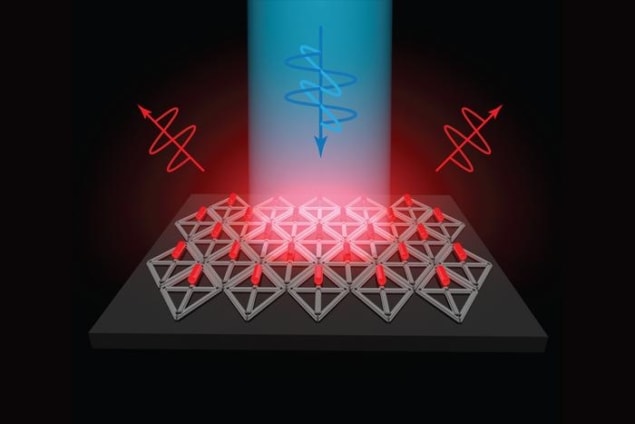
Researchers in the US have used DNA molecules as a scaffold to help them assemble arrays of quantum rods in an ordered, controlled way. By depositing the rods onto this patterned framework, the team at the Massachusetts Institute of Technology (MIT) kept the rods evenly spaced with their nanostructures aligned in a specific direction, which could be useful for applications such as virtual reality devices and micro-light-emitting diodes (microLEDs) in next-generation displays.
Quantum rods are elongated versions of quantum dots – tiny pieces of semiconductor with unique, particle-like optoelectronic properties. These unique properties lend themselves to a host of technological applications. Because the dots and rods emit tuneable, narrowband light, they could be used to make TV screens and other displays containing microLEDs. These next-generation devices would be superior to today’s state-of-the-art organic LED and liquid-crystal displays in terms of their brightness, colour, minimum pixel size and stability.
Quantum rods are particularly attractive for applications like this because the light they emit is polarized, which could improve the displays’ optical efficiencies. However, to achieve such an improvement, the rods in a device all need to be aligned in the same direction, which is challenging with such tiny objects. They also need to be spaced at a certain regular distance from each other to prevent a phenomenon known as self-quenching, which occurs when the rods are so close to each other that they suppress the light emission of their neighbours.
Precisely assembling arrays of quantum rods
Led by biological engineer Mark Bathe, the MIT team developed a quantum-rod assembly method that ticks both boxes. The team’s procedure is based on a technique known as surface-assisted large-scale assembly (SALSA), and it uses the regular structure of DNA as a template for precisely constructing arrays of quantum rods.
The process Bathe and colleagues developed involves emulsifying DNA into a mix with quantum rods made of CdSe/ZnS and CdSe/CdS, then rapidly dehydrating the ensemble. This process, which takes just a few minutes, allows the DNA molecules to form a dense layer on the surface of the rods. Neighbouring DNA “origami” templates then self-assemble onto a two-dimensional surface made of mica, forming the arrays via overhanging strands of DNA on the template edges that cover the 2D surface.
Importantly, these origami structures can be constructed at a size that allows the rods to be separated by a fixed distance from each other – in this case around 10 nm, which is large enough to prevent quenching. The quantum rods also all slot into the origami template with the same orientation.

DNA origami makes 3D superconducting nanostructures
Techniques like this could be important for numerous applications, says Bathe, including augmented or virtual reality devices as well as microLEDs. “DNA-based fabrication is important due to its sustainability, scalability and ability to control nanometre-scale materials structures, their orientations and therefore their functions,” he says.
In the current version of the technique, which the team report in Science Advances, the 2D origami lattices cannot be bigger than around 1 μm2 because the uncontrolled nucleation of origami lattices on the surface yields random initial orientations and positions. The MIT researchers now hope to scale up their approach and make arrays that are more hierarchical with programmed structures at many different length scales. This will be critical for integrating them into real-world devices, they say. “We also hope to move away from environmentally-unfriendly quantum rods like the ones employed in this academic work,” Bathe tells Physics World.



